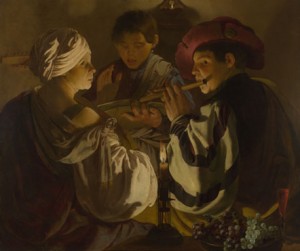The art of good music…
This afternoon, as I struggled along the pavement outside Waterloo station, ducking and weaving between people who were simultaneously walking, texting, fiddling with their iPods, trying to read the paper and so on, I started thinking about how used we’ve all become to doing more than one thing at a time. It brought to mind something I had read in a newspaper article several years ago:
‘Thus a restaurant, where the food is perhaps not of the first order of cooking and where the waiting is not perfect, will cover these deficiencies by providing the loud music that drowns talk and diverts attention from the dishes.’
Wise words there from The Daily Mirror on 18 July 1922. But this particular article was not actually about restaurants. Here’s a bit more:
‘One of the approved methods of getting people to attend to something that hasn’t in itself a very wide appeal is to give them something else as well which will gild the pill for their consumption… Theatres, too. You must have music in the intervals to dodge discussion of the play.’
Still not sure? Here, at last, we get to the point:
‘We hardly expected to see the Museums come into line with this modern tendency to do two things at one time. Yet the National Gallery is going to combine colours with sounds, and we are to look at great pictures while we listen to pretty tunes.’
And there, at last, is the crux of it. In 1922, for the first time in almost 100 years of existence, the National Gallery allowed musicians into its hallowed halls. The ‘pretty tunes’ in question were string quartets by Haydn and Beethoven, performed by students of the Royal College of Music. And the prospect of the performance completely divided public opinion: papers such as the Mirror published satirical cartoons of other acts of ‘dumbing down’ that could go on in public galleries (including badminton and Punch and Judy shows); journalists and politicians insisted that this was a cheap trick to capture public attention; and other writers despaired that uniting these two incompatible arts would only cause to distract full attention from the one or the other.
But supporters of the project put forward convincing arguments. They pointed to the fact that hearing music within the gallery space allowed each art form to inform and enrich the audience’s experience of the other. This had already been tried out, with great success, at the Metropolitan Museum in New York (although the reporter of The Star was quick to point out that in the National Gallery, ‘Chairs will be provided, although no such provision is made in New York, where the public are left to stand or sit on the floor, just as they feel inclined’.)
On the day of the concert itself, the most conservative journalists put the attendance number at around 1,000 people. ‘It drew all kinds of people,’ the Saturday Review reported: ‘the musical amateur who remembers the old “Pops”; Americans with horn-rimmed glasses and strange boots; young artists of both sexes, and casual people who probably had intended, for a long time, to visit the National Gallery, and were brought to a tardy decision by the offer of a concert for sixpence. The commodious central area under the dome was soon full and lovers of music overflowed into every room from which the playing could be heard.’
In other words: it was a roaring success. Further concerts were planned, audiences rushed to attend – and of course, less than twenty years later, Myra Hess was organising an endless stream of concerts at the Gallery to which hundreds flocked every day. The music of the past and the artworks of the present day (the old masters were safely packed into a quarry in Wales for the duration) became dual offerings of comfort, culture and solace in that single building during the Second World War.
And I’m delighted to report that music is still going strong at the National Gallery. Students from the Royal College of Music continue to play there on a fortnightly basis during term time, and visiting audiences are treated to chamber groups, singers, solo percussionists, and even a DJ, as well as new compositions by young composers. But the best bit? Now, the musicians make the art part of their programmes. They explore the paintings with a visiting artist, and are inspired to choose their pieces in a way that reflects their reactions to the gallery space. They are not just in the business of doing two things at once: they are drawing on one art form to provide the creative impulse for the other.
So here we are, 92 years later, and we can still say with the reviewer of the The Spectator:
‘Once more we must express our gratitude to the trustees and the officials of the nation’s Gallery for their courage and their deep sympathy of comprehension. There can be no doubt that these concerts have come to stay.’
The Belle Shenkman Music Programme runs at the National Gallery from October to June each year. You can catch the last concert in the series here.


